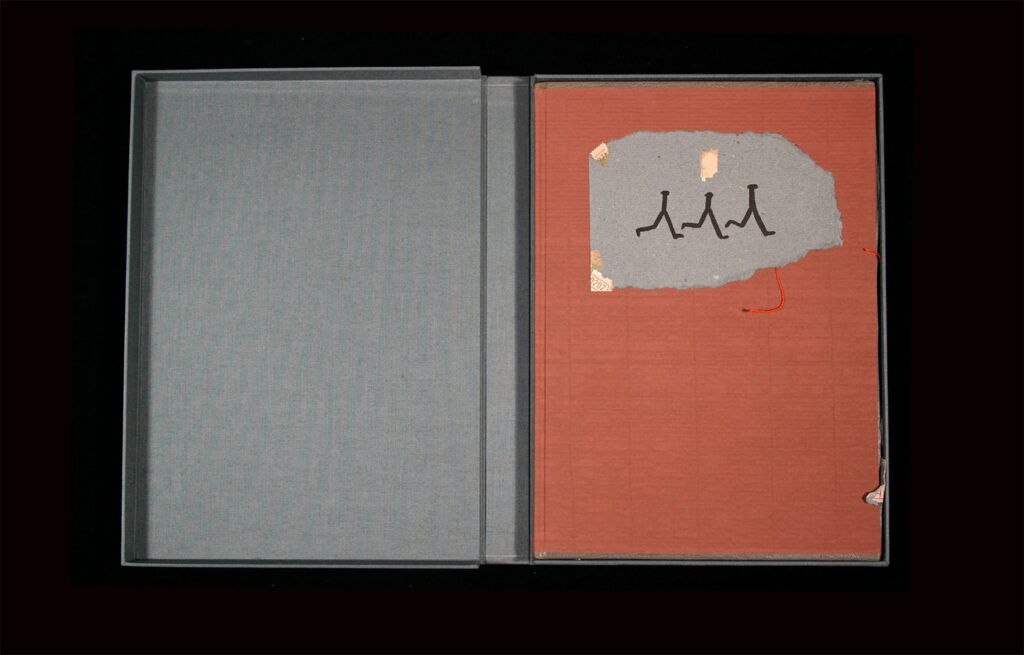A Merz Sonata, with poetry by Jerome Rothenberg, is a tribute to Kurt Schwitters, an artist loosely affiliated with the Dada movement in Europe between the wars. A period of great anxiety and unrest, this era was a fertile time for a break from the old ways, a time of intense creativity in all of the arts.
Schwitters, who was an artist as well as a poet and graphic designer, was therefore an ideal subject for this book. Futura, one of the earliest sans serif typefaces and the one Schwitters favored, was the typeface I used in the book. One of the greatest challenges in designing this book was to meld Schwitters’ style of graphic design and collage into a new artistic statement, a statement distinctively Schwitters but different from him.
Schwitters was a real innovator in every art form. He brought the medium of collage, which was in its infancy, to a new height. In keeping with the Dada philosophy, Schwitters created powerful collage compositions from found materials, including trash and printed ephemera he picked up in streets and alleys. He made hundreds of small collages pieced together from scraps of discarded paper and called them “Merz”, named after a torn headline from a newspaper he found on the streets.
Collage is a key element in the poetry and the design of the book. Rothenberg “collaged” into his poem bits of Schwitters’ poetry, and I “collaged” bits of Schwitter’s imagery, literally and figuratively into the book. The book is full of this—even the cover pages, which I handmade, are full of tickets and string. The etchings were made from impressing bits of cardboard and other materials in to a soft ground, creating a collaged effect.
One could look at this book as a metaphor for piecing together fragments from something which has broken down; a rebuilding or rebirth. The Dada movement, Merz and the new artform of collage all come together in the Merz Sonata.
50 edition
